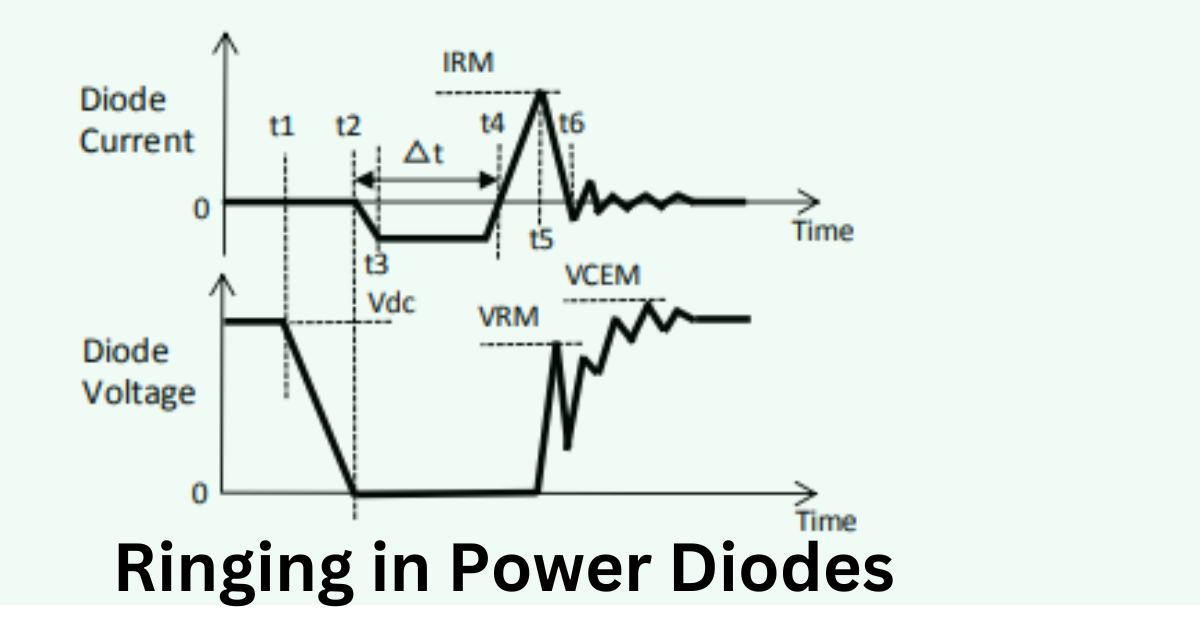Introduction
In the realm of power electronics, diodes play a critical role in the management and conversion of electrical energy. Power diodes, known for their robustness and efficiency, are essential components in converters, inverters, and power control systems. However, these diodes can exhibit a phenomenon known as “ringing” during their recovery phase, which can impact the performance and longevity of electronic circuits. This article explores the causes, effects, and mitigation strategies for ringing in power diodes.
What is the Ringing Phenomenon in Power Diodes?
Ringing in power diodes refers to the oscillations in voltage and current that occur when the diode transitions from conducting (forward-biased state) to blocking (reverse-biased state). This transition is not instantaneous and involves a recovery time during which the diode ceases to conduct current. The ringing is primarily due to the interaction of the diode’s internal capacitances and the inductances of the circuit, forming a resonant LC (inductor-capacitor) circuit.

Causes of Ringing
The primary cause of ringing is the stored charge in the diode, known as the reverse recovery charge. When a diode stops conducting, it must first remove this stored charge before it can effectively block reverse voltage. The rapid switching off of the current in inductive circuits leads to a sudden change in voltage, which, combined with the stored charge, results in oscillatory behavior. Other factors influencing ringing include:
- Circuit layout: Inductance in the wiring and layout of the circuit can exacerbate ringing effects.
- Switching speed: Faster switching speeds can increase the abruptness of the voltage change, intensifying the ringing.
- Diode characteristics: The physical and material characteristics of the diode, such as junction capacitance and the quality of the semiconductor material, also affect the severity of ringing.
Effects of Ringing
The ringing phenomenon can have several undesirable effects on electronic systems, including:
- Increased electromagnetic interference (EMI): The oscillations can generate high-frequency noise, which interferes with nearby electronic components.
- Reduced efficiency: Ringing can lead to power losses, reducing the overall efficiency of the power electronic system.
- Component stress: Frequent and severe ringing can stress other components in the circuit, particularly capacitors and transformers, potentially leading to premature failure.
Mitigation Strategies for Ringing in Power Diodes
To mitigate the effects of ringing, engineers can employ several strategies:
- Snubber circuits: Adding snubber circuits (comprising resistors and capacitors) across the diode can help absorb the abrupt energy changes and minimize oscillations.
- Soft recovery diodes: Using diodes specifically designed with softer recovery characteristics can reduce the amount of stored charge and lessen ringing.
- Circuit design adjustments: Optimizing the layout to minimize inductance, using thicker wiring, and arranging components strategically can help reduce the impact of ringing.
- Controlled switching techniques: Implementing controlled switching speeds and patterns can help manage the transition of the diode more smoothly, thereby reducing ringing.
Conclusion
The ringing phenomenon during the recovery of power diodes is a significant challenge in power electronics, impacting system performance and reliability. By understanding the underlying causes and implementing effective mitigation strategies, engineers can significantly improve the stability and efficiency of power electronic systems. Future advancements in semiconductor technology and circuit design are likely to further reduce the effects of ringing, enhancing the performance of power diodes in various applications.